Instruction
Create a swing that’s built to last with help from Tom Watson

Tom Watson continues to prove that solid fundamentals can withstand the test of time in the game of golf.
Now 64, Watson continues to exhibit the consistency of a golfer decades younger. He’s made the cut in The Open Championship the last three times he’s played in the event, and as we all remember, Watson nearly won his ninth major championship at Turnberry in 2009.
If you want your game to age as gracefully as Watson’s, try incorporating the following proven basics to improve your ball striking regardless of your age.
Stronger Grip
In his book “Lessons of a Lifetime,” Watson advises us to grip the club with the lead hand turned so that at least two knuckles are visible at address. The heel pad of your lead hand will be on top of the grip, with the thumb sitting just to the aft side of center. This allows the wrists to naturally react to the weight of the club head and reduces the need for excessive rolling of the clubface through impact.
Athletic Posture
Our only connection to the club is our hands, so it goes without saying that our grip should be correct. Additionally, our only connection to the ground is our feet. We want to feel balanced, athletic, and grounded. You want to be “ready to respond and move in any direction,” as Mr. Watson states. You want an athletic tension in the thighs that comes from the counter-balance of bending from the hips.
A Full Turn
Watson is an advocate, as am I, of a full shoulder turn at the top of swing. He suggests that less flexible golfers should allow their lead heel to lift, providing more turn as golfers age. I will simply say that all golfers should allow their hips and lower bodies to respond naturally to achieve a better top of swing position. We each possess a certain amount of flexibility and you don’t want to short change your motion by a contrived lower body action.
Pivot Drill
This drill will help you to produce a full turn, as well as keep your shoulders on a steeper plane. Work on this drill in segments, then blend it into one seamless motion as your coordination improves.
- Place the club across your shoulders, grip end pointing towards the target.
- Rotate your shoulders perpendicular to your spine so that the grip points down towards the ground at the top of your backswing. Allow your hips to turn.
- Reverse the rotation as if you are now going to hit the ball with the clubface, which is opposite your trail shoulder.
- Release your trail side for a balanced finish.
Watson’s swing provides us with a great example of maintaining width and rhythm during the downswing. Here is a drill that will help you incorporate both of these elements into your swing.
Trail Arm Only Drill
- Hit short irons off of a low tee, placing your lead hand on your trail shoulder for resistance.
- Focus on your pivot action back and through. Hitting with only the trail arm will give you a sense of width, proper sequence, and motion.
It’s no secret why Tom Watson has been able to achieve success over so many years; his golf swing is based on sound fundamentals that withstand the aging process. Take my advice, and incorporate Watson’s fundamentals to increase your longevity!
- LIKE16
- LEGIT1
- WOW0
- LOL0
- IDHT0
- FLOP0
- OB0
- SHANK0
Instruction
The Wedge Guy: The easiest-to-learn golf basic

My golf learning began with this simple fact – if you don’t have a fundamentally sound hold on the golf club, it is practically impossible for your body to execute a fundamentally sound golf swing. I’m still a big believer that the golf swing is much easier to execute if you begin with the proper hold on the club.
As you might imagine, I come into contact with hundreds of golfers of all skill levels. And it is very rare to see a good player with a bad hold on the golf club. There are some exceptions, for sure, but they are very few and very far between, and they typically have beat so many balls with their poor grip that they’ve found a way to work around it.
The reality of biophysics is that the body moves only in certain ways – and the particulars of the way you hold the golf club can totally prevent a sound swing motion that allows the club to release properly through the impact zone. The wonderful thing is that anyone can learn how to put a fundamentally sound hold on the golf club, and you can practice it anywhere your hands are not otherwise engaged, like watching TV or just sitting and relaxing.
Whether you prefer an overlap, interlock or full-finger (not baseball!) grip on the club, the same fundamentals apply. Here are the major grip faults I see most often, in the order of the frequency:
Mis-aligned hands
By this I mean that the palms of the two hands are not parallel to each other. Too many golfers have a weak left hand and strong right, or vice versa. The easiest way to learn how to hold the club with your palms aligned properly is to grip a plain wooden ruler or yardstick. It forces the hands to align properly and shows you how that feels. If you grip and re-grip a yardstick several times, then grip a club, you’ll see that the learning curve is almost immediate.
The position of the grip in the upper/left hand
I also observe many golfers who have the butt of the grip too far into the heel pad of the upper hand (the left hand for right-handed players). It’s amazing how much easier it is to release the club through the ball if even 1/4-1/2″ of the butt is beyond the left heel pad. Try this yourself to see what I mean. Swing the club freely with just your left hand and notice the difference in its release from when you hold it at the end of the grip, versus gripping down even a half inch.
To help you really understand how this works, go to the range and hit shots with your five-iron gripped down a full inch to make the club the same length as your seven-iron. You will probably see an amazing shot shape difference, and likely not see as much distance loss as you would expect.
Too much lower (right) hand on the club
It seems like almost all golfers of 8-10 handicap or higher have the club too far into the palm of the lower hand, because that feels “good” if you are trying to control the path of the clubhead to the ball. But the golf swing is not an effort to hit at the ball – it is a swing of the club. The proper hold on the club has the grip underneath the pad at the base of the fingers. This will likely feel “weak” to you — like you cannot control the club like that. EXACTLY. You should not be trying to control the club with your lower/master hand.
Gripping too tightly
Nearly all golfers hold the club too tightly, which tenses up the forearms and prevents a proper release of the club through impact. In order for the club to move back and through properly, you must feel that the club is controlled by the last three fingers of the upper hand, and the middle two fingers of the lower hand. If you engage your thumbs and forefingers in “holding” the club, the result will almost always be a grip that is too tight. Try this for yourself. Hold the club in your upper hand only, and squeeze firmly with just the last three fingers, with the forefinger and thumb off the club entirely. You have good control, but your forearms are not tense. Then begin to squeeze down with your thumb and forefinger and observe the tensing of the entire forearm. This is the way we are made, so the key to preventing tenseness in the arms is to hold the club very lightly with the “pinchers” — the thumbs and forefingers.
So, those are what I believe are the four fundamentals of a good grip. Anyone can learn them in their home or office very quickly. There is no easier way to improve your ball striking consistency and add distance than giving more attention to the way you hold the golf club.
More from the Wedge Guy
- The Wedge Guy: Golf mastery begins with your wedge game
- The Wedge Guy: Why golf is 20 times harder than brain surgery
- The Wedge Guy: Musings on the golf ball rollback
- LIKE83
- LEGIT13
- WOW5
- LOL1
- IDHT0
- FLOP4
- OB1
- SHANK8
Instruction
Clement: Stop ripping off your swing with this drill!

Not the dreaded headcover under the armpit drill! As if your body is defective and can’t function by itself! Have you seen how incredible the human machine is with all the incredible feats of agility all kinds of athletes are accomplishing? You think your body is so defective (the good Lord is laughing his head off at you) that it needs a headcover tucked under the armpit so you can swing like T-Rex?
- LIKE0
- LEGIT2
- WOW2
- LOL0
- IDHT0
- FLOP0
- OB0
- SHANK2
Instruction
How a towel can fix your golf swing

This is a classic drill that has been used for decades. However, the world of marketed training aids has grown so much during that time that this simple practice has been virtually forgotten. Because why teach people how to play golf using everyday items when you can create and sell a product that reinforces the same thing? Nevertheless, I am here to give you helpful advice without running to the nearest Edwin Watts or adding something to your Amazon cart.
For the “scoring clubs,” having a solid connection between the arms and body during the swing, especially through impact, is paramount to creating long-lasting consistency. And keeping that connection throughout the swing helps rotate the shoulders more to generate more power to help you hit it farther. So, how does this drill work, and what will your game benefit from it? Well, let’s get into it.
Setup
You can use this for basic chip shots up to complete swings. I use this with every club in my bag, up to a 9 or 8-iron. It’s natural to create incrementally more separation between the arms and body as you progress up the set. So doing this with a high iron or a wood is not recommended.
While you set up to hit a ball, simply tuck the towel underneath both armpits. The length of the towel will determine how tight it will be across your chest but don’t make it so loose that it gets in the way of your vision. After both sides are tucked, make some focused swings, keeping both arms firmly connected to the body during the backswing and follow through. (Note: It’s normal to lose connection on your lead arm during your finishing pose.) When you’re ready, put a ball in the way of those swings and get to work.

Get a Better Shoulder Turn
Many of us struggle to have proper shoulder rotation in our golf swing, especially during long layoffs. Making a swing that is all arms and no shoulders is a surefire way to have less control with wedges and less distance with full swings. Notice how I can get in a similar-looking position in both 60° wedge photos. However, one is weak and uncontrollable, while the other is strong and connected. One allows me to use my larger muscles to create my swing, and one doesn’t. The follow-through is another critical point where having a good connection, as well as solid shoulder rotation, is a must. This drill is great for those who tend to have a “chicken wing” form in their lead arm, which happens when it becomes separated from the body through impact.
In full swings, getting your shoulders to rotate in your golf swing is a great way to reinforce proper weight distribution. If your swing is all arms, it’s much harder to get your weight to naturally shift to the inside part of your trail foot in the backswing. Sure, you could make the mistake of “sliding” to get weight on your back foot, but that doesn’t fix the issue. You must turn into your trial leg to generate power. Additionally, look at the difference in separation between my hands and my head in the 8-iron examples. The green picture has more separation and has my hands lower. This will help me lessen my angle of attack and make it easier to hit the inside part of the golf ball, rather than the over-the-top move that the other picture produces.


Stay Better Connected in the Backswing
When you don’t keep everything in your upper body working as one, getting to a good spot at the top of your swing is very hard to do. It would take impeccable timing along with great hand-eye coordination to hit quality shots with any sort of regularity if the arms are working separately from the body.
Notice in the red pictures of both my 60-degree wedge and 8-iron how high my hands are and the fact you can clearly see my shoulder through the gap in my arms. That has happened because the right arm, just above my elbow, has become totally disconnected from my body. That separation causes me to lift my hands as well as lose some of the extension in my left arm. This has been corrected in the green pictures by using this drill to reinforce that connection. It will also make you focus on keeping the lead arm close to your body as well. Because the moment either one loses that relationship, the towel falls.


Conclusion
I have been diligent this year in finding a few drills that target some of the issues that plague my golf game; either by simply forgetting fundamental things or by coming to terms with the faults that have bitten me my whole career. I have found that having a few drills to fall back on to reinforce certain feelings helps me find my game a little easier, and the “towel drill” is most definitely one of them.
- LIKE12
- LEGIT2
- WOW2
- LOL0
- IDHT0
- FLOP2
- OB0
- SHANK8
-

 19th Hole2 weeks ago
19th Hole2 weeks agoJohn Daly stuns fans into silence with brutal opening tee shot on PGA Tour Champions
-

 19th Hole1 week ago
19th Hole1 week agoThings got heated at the Houston Open between Tony Finau and Alejandro Tosti. Here’s why
-

 19th Hole6 days ago
19th Hole6 days agoReport: Tiger Woods has ‘eliminated sex’ in preparation for the 2024 Masters
-

 19th Hole3 weeks ago
19th Hole3 weeks ago2-time major champ announces shock retirement from the sport at age of 33
-

 19th Hole3 weeks ago
19th Hole3 weeks agoEdoardo Molinari reveals the latest PGA Tour golfer to turn down ‘good offer’ from LIV Golf
-

 19th Hole2 weeks ago
19th Hole2 weeks agoCharlie Woods finds it tough going on American Junior Golf Association debut
-

 19th Hole1 week ago
19th Hole1 week agoAddiction, spinal fusion, and scam artists – Everything Anthony Kim revealed in candid interview with David Feherty
-

 19th Hole5 days ago
19th Hole5 days agoAnthony Kim says doctors told him that he ‘may not have much time left’ ahead of LIV return

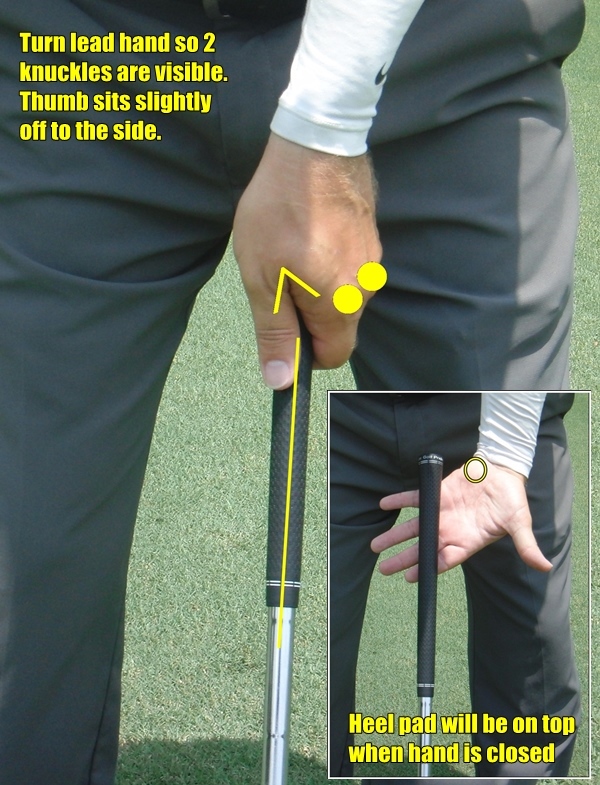
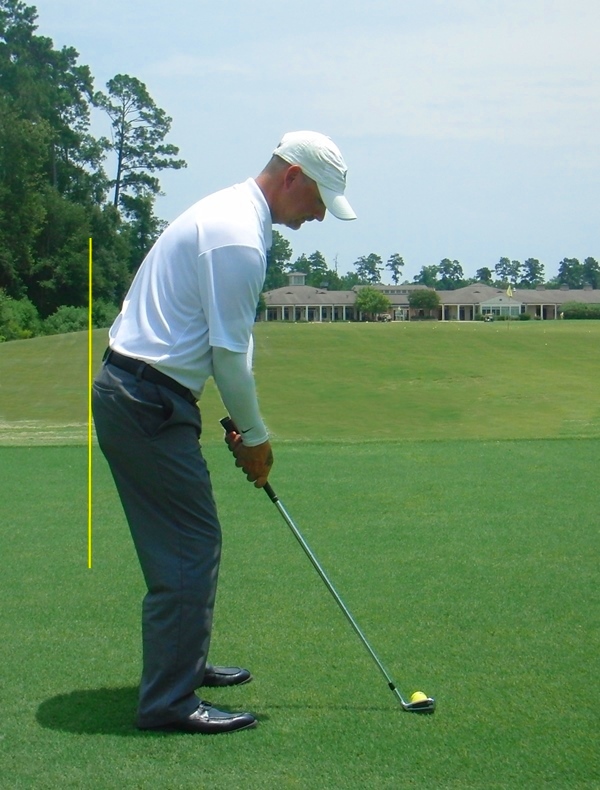
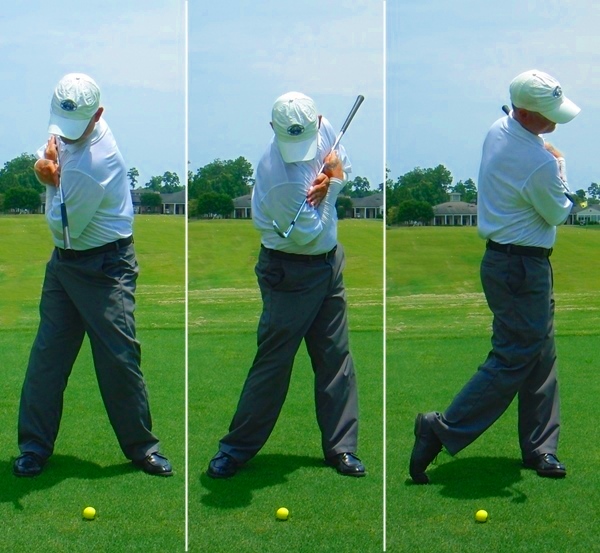
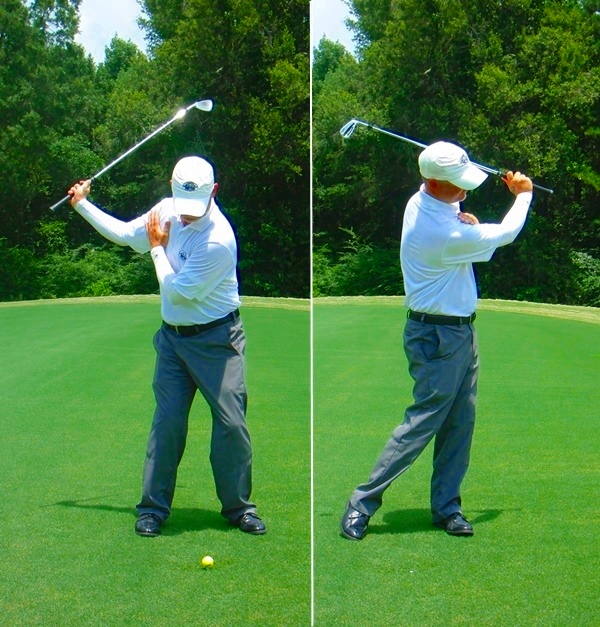














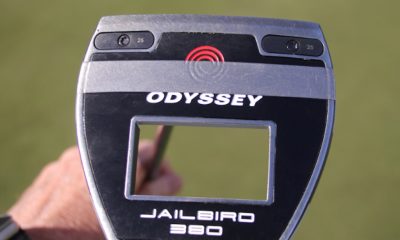

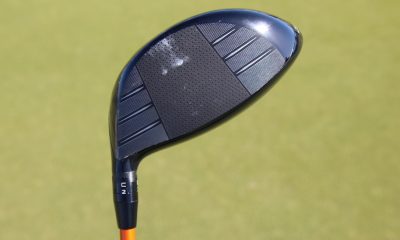

Knuckles
Aug 8, 2014 at 5:40 pm
Sam Snead advised on 3 knuckles. And in the photo above, it looks more like 3 knuckles to me.
Michael Howes
Aug 8, 2014 at 9:25 pm
2, 2 1/2, 3… Mr. Watson recommends a stronger grip to a weaker grip & that is what I hope we take away from this picture. NO lead thumbs straight down the shaft. Love the Snead reference – a must for any golfer’s library.
Tyler
Aug 8, 2014 at 11:53 am
I think the main reason Tom Watson’s swing is so timeless and “healthy” is because it’s an extremely rotary swing compared to Jack’s swing or the modern swing.
With Jack’s swing it was very much a “down the line” swing where you thrust the hips toward the target. The reverse K. If you watch slow motion of Watson you’ll notice there is very little movement off the ball or toward the target: https://www.youtube.com/watch?v=fYeE-GIyn9Y
With the modern swing they get the shoulder rotary aspect right on the backswing, but you’re taught to start the swing with a “squat” motion in the front leg. The problem with that is when you squat forcefully it creates a tremendous amount of torque on your back, which creates a tremendous amount of power, but is not terribly healthy. Also, squatting naturally encourages a weight transfer to your heels which in turn makes the spine angle go more upright. Translation, hook/block inconsistencies. Tom Watson encourages us to keep shoulders on the same plane throughout the swing: https://www.youtube.com/watch?v=b6cntSpVbZo
Bernard
Aug 8, 2014 at 4:27 pm
I completely agree with your comments. I would add that his swing is rotational and yet it falls in the upright plane. I’m not a big fan of flat swing theology. Not a fan of the reverse K either. Watson’s just right for me.
Michael Howes
Aug 8, 2014 at 9:12 pm
I enjoyed reading your thoughts and comments Tyler – keep them coming and thanks for reading.
Dennis Smeiska
Aug 8, 2014 at 8:29 am
With so many younger players with back problems it makes me wonder if the modern swing is the reason. They may be able to hit a country mile but at what physical cost to their body. I will take Tom’s swing any day over the modern swing. I want to play this game for a lifetime.
Bernard
Aug 7, 2014 at 11:07 pm
I started by watching video with Jack, then I went on to read Hogan’s classic, but the swing I feel is one of the best ever and the swing I try to emulate the most is Mr. Watson’s.
Michael Howes
Aug 8, 2014 at 9:10 pm
I don’t think that anyone will dispute Mr. Watson’s classy swing and character with you Bernard.
Knobbywood
Aug 10, 2014 at 12:34 pm
Maybe you should research mr watsons classy past… A few blips on the radar there but luckily for him he didn’t play and live in the media fishbowl that the best do today
Michael Howes
Aug 11, 2014 at 4:21 pm
Blips do not define the man, but reveal the fact that we are all human, despite fame or the ability to hit a golf ball well IMHO. Check out some of the things Mr. Watson has “given back” & I’m sure you find respect, despite transgressions. “All men make mistakes, but a good man yields when he knows his course is wrong, and repairs the evil. The only crime is pride.” Sophocles
But back to golf – What a timeless swing that is still yielding awesome results!